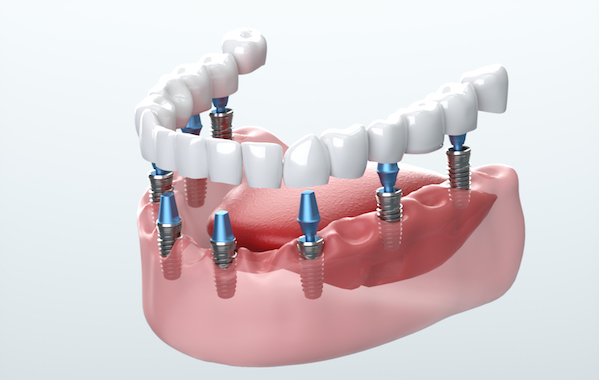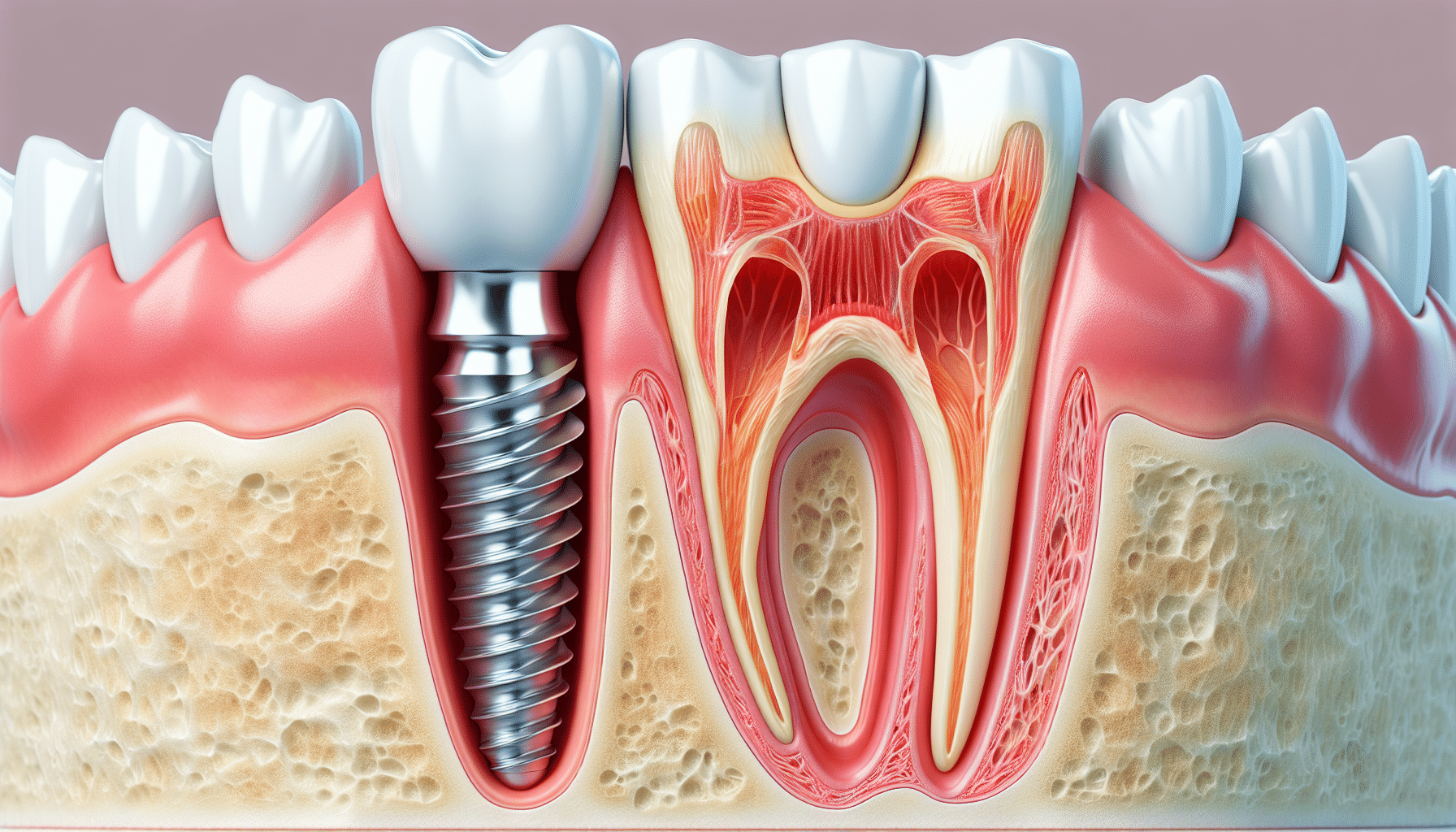Implant Dental Grandville MI - Learn More About Your Implants Treatment
The journey towards dental implants begins with a radical assessment of the jawbone's condition. When there may be insufficient bone density to help an implant, bone grafting turns into a click this link crucial process to recreate a stable foundation. Understanding how a lot bone grafting is needed more for dental implants greatly influences the treatment plan, timeline, and total success rate.
The quantity of bone grafting required is dependent upon multiple components, including the extent of bone loss, the implant's size, and the specific location inside the mouth. In circumstances of significant bone loss because of periodontal diseases, trauma, or extended tooth loss, extra intensive grafting may be essential. Conversely, if the bone loss is minimal, a smaller graft may suffice.
Dental Implants Whole Mouth Wyoming MI - Frequently Asked Questions
The evaluation course of typically includes imaging studies such as X-rays or 3D scans, permitting the dental professional to visualize the bone structure (Dental Implants Whole Mouth Jenison MI). These images help in determining the standard and amount of current bone. If the bone is deemed insufficient, the dentist will then outline the suitable grafting procedures
Grafting could be sourced from numerous areas. Autografts, which contain harvesting bone from the patient's own body, are often deemed the gold standard. These provide glorious integration with the existing bone however come with the disadvantage of additional surgery. Other choices embody allografts, which use donor bone, and artificial supplies designed to imitate natural bone. Each choice has its own implications on therapeutic and success rates.
After determining the mandatory quantity of bone grafting, the dental professional will create a tailored plan for the affected person. This plan could embrace the timing of bone grafting in relation to the implant placement. In some cases, a graft could be carried out concurrently with the implant surgery. Alternatively, in additional complicated scenarios, a separate healing interval is indicated.
Healing timelines differ based mostly on the person's health, the extent of grafting, and the type of graft used. Generally, the healing of a bone graft takes several months before an implant could be positioned. During this time, bone regeneration occurs, leading to a secure base for the implant.
Dental Implant Dentures Walker MI - How Much Do Dental Implants Cost?
Patients usually marvel about the risks related to bone grafting. While issues such as infection or graft failure are potential, these occasions are relatively rare. Adhering to post-operative care instructions and attending follow-up appointments minimize risks and promote healing.
Once the bone has adequately healed, the dentist assesses the graft's success by evaluating the bone density and stability. If every thing appears favorable, the subsequent steps toward placing the dental implant can begin. The success of this next step largely hinges on the standard of the bone graft and its integration with the encircling bone.
Cost issues play an necessary position in the decision-making process. The expense of bone grafting varies primarily based on materials used, the complexity of the case, and geographic location. It is essential for patients to discuss funds upfront to avoid unexpected bills later in the therapy.
Dental Implants And Dentures Muskegon MI - Dental Implants Advantages
Also, patients should have practical expectations concerning the timeline and outcomes. Many factors can affect how a lot bone grafting is needed and its general effectiveness. A collaborative strategy involving the affected person and the dental group not solely ensures clarity but in addition enhances the chances of a successful consequence.

Maintaining good oral hygiene and regular dental visits following the procedure is important. These practices can prevent complications and ensure that both the graft and the implant stay secure over time. The ongoing relationship with a dental skilled is essential, particularly in the months following the procedures.
In conclusion, understanding how much bone grafting is required for dental implants encompasses a multi-faceted approach that considers bone quality, grafting varieties, therapeutic time, and general affected person health. The stability between achieving the desired aesthetic and practical outcomes while minimizing risks and problems is on the heart of dental implant procedures. The journey could also be intensive, but a well-planned strategy maximizes the chances for a successful, long-lasting lead to restorative dental work.
- Determining the quantity of bone grafting required for dental implants often hinges on the preliminary bone density and quantity of the patient's jawbone.
- Each patient's case is exclusive; components such as earlier extractions, periodontal disease, or trauma can influence the need for grafting.
- A 3D imaging scan is usually performed to evaluate the precise dimensions of the out there bone and inform the grafting technique.
- The kind of dental implant placement—immediate or delayed—may dictate the quantity of bone grafting necessary for stability and integration.
- Different kinds of graft supplies, corresponding to autografts, allografts, or synthetic options, can influence how much grafting materials is required.
- Assessing the affected person's overall health, age, and way of life habits can have an result on the therapeutic course of, influencing graft volume requirements.
- The depth and placement of the implant can necessitate varying amounts of graft material to secure optimal outcomes.
- Successful integration of the dental implant typically depends on adequate bone density, resulting in a tailored grafting approach for each individual.
- Consultation with an oral surgeon will provide a clearer estimate of the bone grafting needed based mostly on comprehensive evaluations and imaging outcomes.
- Post-grafting therapeutic time varies; thus, a cautious analysis is crucial to determine the ultimate quantity of grafting required for profitable implantation.undefinedHow a lot bone grafting is required for dental implants?
Dental Implants Affordable Holland MI - What Is A Dental Implants?
What is bone grafting and why is it necessary for dental implants?undefinedBone grafting is a surgical process that adds bone or bone-like materials to the jawbone. It is necessary for dental implants when the present bone is insufficient to assist the implant, ensuring stability and long-term success.
How do I know if I want a bone graft for dental implants?undefinedYour dentist or oral surgeon will evaluate your jawbone through x-rays or 3D imaging to find out its density and quantity. If they discover that you lack adequate bone, they may suggest a bone graft earlier than continuing with the dental implant.
Denture Dental Implants Jenison MI - Multiple Tooth Dental Implants
What elements influence the quantity of bone grafting needed?undefinedFactors embody the dimensions and site of the implant web site, the health and density of current bone, and individual healing capacity (Implant Dental Muskegon Heights MI). These elements help the dentist determine the appropriate amount of graft material needed
Are there several varieties of bone grafts used for dental implants?undefinedYes, there are a number of types, including autografts (from your own body), allografts (from a donor), xenografts (from animals), and synthetic graft supplies. Each kind has distinctive benefits and could be selected based mostly on individual patient wants.
Dental Implants Muskegon Heights MI - Dental Implants: What You Should Know
How long does the bone grafting process take?undefinedThe duration varies based mostly on the complexity of the grafting course of and the extent of the area handled. Generally, a bone grafting procedure can take anyplace from half-hour to a few hours, depending on the particular circumstances.
What is the recovery time after a bone graft for implants?undefinedRecovery occasions can differ, however usually, initial therapeutic might take a couple of weeks, while complete integration of the graft with the bone can take a number of months. Your dentist will provide a personalized timeline primarily based on your scenario.

Will I experience pain after the bone grafting procedure?undefinedSome discomfort is widespread after a bone graft, nevertheless it's typically manageable with prescribed pain medication. Most patients report that pain diminishes considerably inside a few days.
Dental Teeth Implants Grand Rapids MI - Frequently Asked Questions
How does bone grafting affect the overall dental implant timeline?undefinedBone grafting could lengthen the general timeline for receiving dental implants, because it requires a therapeutic period before implants can be positioned. This can add a quantity of months to the method but is essential for a successful implant placement.

Are there risks related to bone grafting for dental implants?undefinedLike any surgical process, bone grafting carries some risks, corresponding to infection, graft failure, or issues associated to anesthesia. However, when carried out by an experienced professional, these risks are generally low.
Can I actually have dental implants placed immediately after a bone graft?undefinedIn many cases, dental implants can't be positioned instantly after a bone graft due to the want for the graft to combine into the prevailing bone. However, some methods, like immediate loading, may enable for this underneath particular conditions. Your provider will advise you on the best choice primarily based in your circumstances.